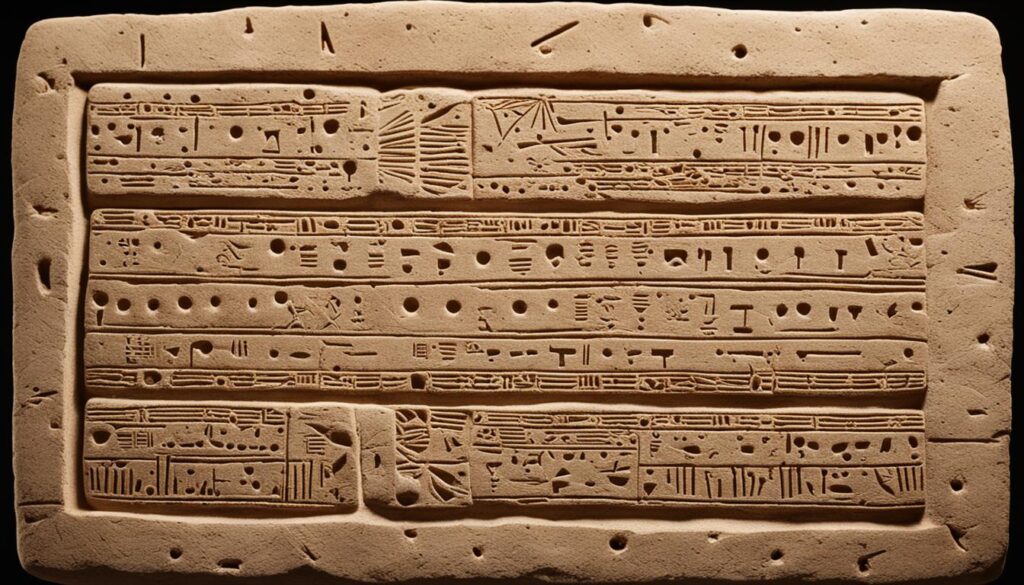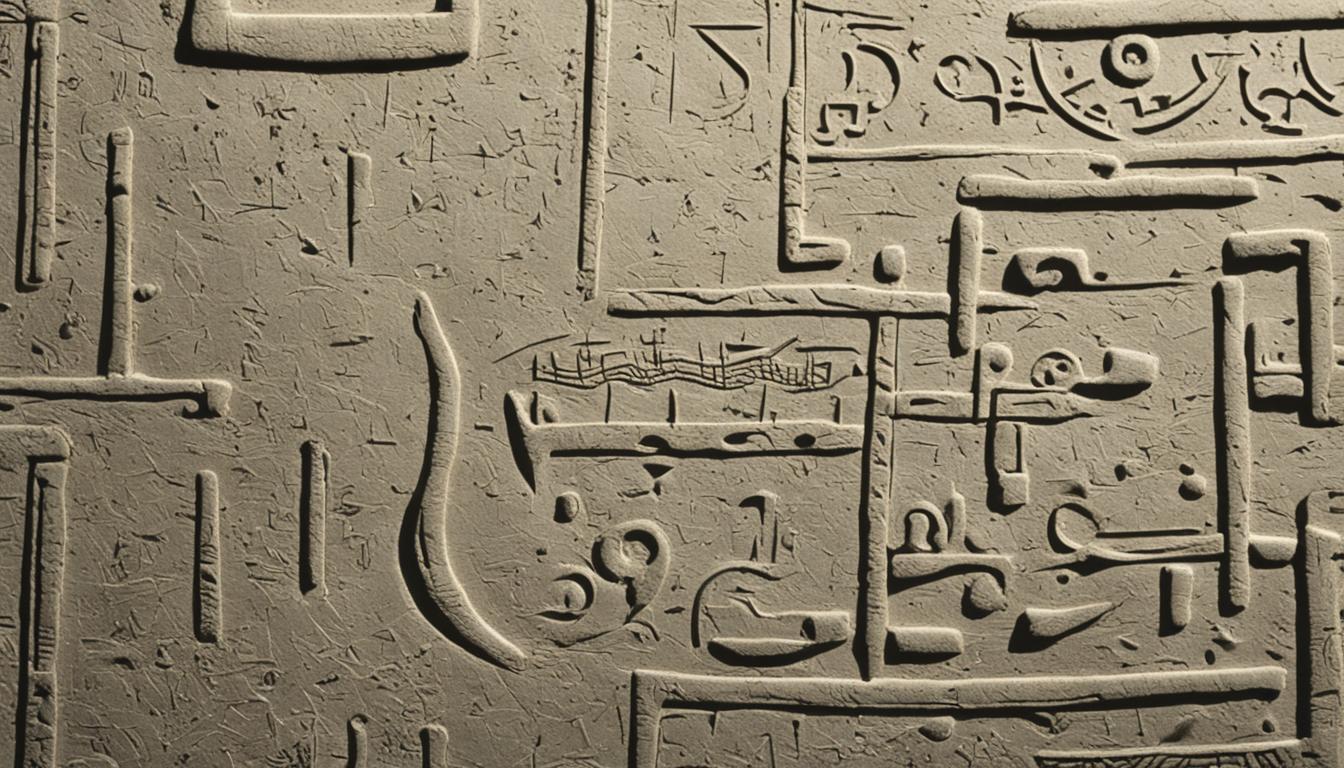Music has been a big part of human life since the earliest times. The oldest song we know was found on clay tablets in Syria from the 14th century BCE. This song, called the Hurrian Hymn No. 6, shows us what our ancestors’ music sounded like.
People have always been curious about old songs. Before we found this song, the oldest music evidence was flutes made of bone and ivory, dating back 43,000 years. The Hurrian Hymn No. 6 is now the oldest complete song we have, giving us a peek into ancient music.
Key Takeaways
- The oldest known song dates back to the 14th century BCE
- It was discovered on clay tablets in Syria
- The song is known as the Hurrian Hymn No. 6
- Ancient music instruments include bone and ivory flutes
- The hymn includes musical notations for a nine-stringed lyre
- This discovery sheds light on prehistoric songs and musical practices
Discovering the Hurrian Hymn No. 6: The Oldest Known Song

The history of music goes way back, and the Hurrian Hymn No. 6 is a key piece from ancient times. It’s written in cuneiform on clay tablets from the 14th century BCE. This melody gives us a peek into the music of the past.
Experts in music found this hymn, which is one of many dedicated to gods and goddesses. It’s for Nikkal, the wife of the moon god. This shows how important music was in ancient religious life.
This hymn changed how we see ancient music. It’s in Hurrian and Akkadian, with notes on how to play it. This detailed music notation shows that early music was more complex than we thought.
Now, the tablet with this song is at the National Museum of Damascus. It helps researchers learn more about ancient music. This keeps the history of music alive for us today.
Ancient Musical Traditions and Instruments
Music has been a big part of human life for thousands of years. Songs passed down through generations keep ancient tunes and culture alive. The oldest flutes found are 43,000 years old, showing how deep our musical roots go.
Old musical instruments varied a lot around the world. The Hurrian Hymn No. 6 was for a nine-stringed sammûm, like a lyre. Other old instruments included harps, drums, and wind instruments. These helped shape the sounds of early societies.
The creation of musical notation was a big step forward. The cuneiform notation in Hurrian hymns kept complex music alive. This innovation linked oral traditions with written records, saving ancient tunes for us today.
Now, we’re still learning about these old musical traditions. By looking at archaeological finds and old texts, we learn about our ancestors’ music. This research shows us the wide range of human musical expression over time.
Reconstructing and Performing Ancient Melodies
Trying to bring back ancient tunes is a big challenge. The Hurrian Hymn No. 6 has led to many attempts at making it sound like the old days. But, no one version is widely accepted. This is because the old music notation is hard to understand and we don’t know much about ancient music.
Experts use special methods to figure out old chants and make them sound again. Dr. David Creese played an eight-stringed instrument to show us what it might have sounded like. Michael Levy played the lyre and Malek Jandali did an orchestral version in 2009, each with their own take on the song.
These efforts to recreate ancient music help us learn about old musical traditions. They also suggest possible connections between ancient and modern music. Just like how historical documents shape our view of the past, these musical interpretations connect us to our ancestors through sound.
We might not hear these tunes exactly as they were played long ago. But, modern versions let us feel a part of history. These reconstructions link us to the musical past of ancient cultures. They also inspire new music today.

Leave a Reply